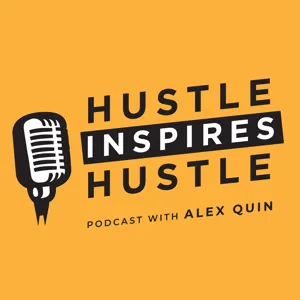Podcast Summary
New subscriber-exclusive series 'Qualys' featuring condensed best episodes from 'Peter Ate PDQ': The team launches a new series for subscribers with short, valuable episodes from the main podcast, while also supporting charitywater.org
The team behind the "Peter Ate PDQ" podcast is launching a new subscriber-exclusive series called "Qualys," which will feature condensed versions of the best episodes from the main podcast. These episodes will be released Tuesday through Friday and can only be accessed through the private subscriber-only podcast feed. The team aims to keep these episodes under 10 minutes long to accommodate busy listeners who may not have time to listen to every episode or for those who have already listened but may have forgotten the key points. Occasionally, some of these "Qualys" episodes will be released in the main feed for all listeners to enjoy. The team has also separated the financial streams of the podcast and its charity work. When listeners donate to charitywater.org through their American Express card, 3% of the donation goes to the MX, while the team receives 97%. This transparency and commitment to giving back sets the podcast apart. If you're interested in subscribing to the podcast and receiving exclusive content, visit peteratiamd.com/subscribe. Overall, the "Qualys" series aims to provide listeners with the most valuable content from the main podcast in a convenient and accessible way, while also supporting a worthy cause.
Revolutionizing charitable giving through transparency and accountability: Charity: Water transformed donor experience by directly sending funds to the field, using technology for proof of use, and creating a compelling brand
Charity: Water, founded by Scott Harrison, aimed to revolutionize charitable giving through transparency and accountability. The first pillar was ensuring that donors knew exactly where their money was going, by sending it directly to the field and providing proof of use through technology like Google Earth. The second pillar was creating a sense of connection and proof for donors, allowing them to see exactly where their donations were making an impact. Lastly, Harrison sought to build an inspiring and imaginative brand, setting Charity: Water apart from other charities. By combining transparency, accountability, and a compelling brand, Charity: Water aimed to make charitable giving a meaningful and personal experience for donors.
Outdated charity marketing tactics: Charities should shift from using shame and guilt to create authentic connections with donors.
The way charities market themselves, using tactics that evoke feelings of shame and guilt, is not effective or healthy for donors. The use of language like "giving back" and implying a sense of debt or obligation can create an unhealthy relationship with charitable giving. These outdated marketing strategies, as exemplified by commercials from the past, are being surpassed by more sophisticated marketing techniques. As Nick Kristoff put it, even toothpaste brands have more sophisticated marketing than many charitable causes. It's time for charities to rethink their marketing strategies and focus on creating authentic connections with donors, rather than relying on outdated tactics that evoke negative emotions.
Nonprofits struggle to attract and retain top talent: Nonprofits face challenges in marketing and compensation, leading to a talent gap. Strategies like digital marketing, university collaborations, and flexible work arrangements can help nonprofits compete for talent and further their mission.
The nonprofit sector faces significant challenges in attracting and retaining top talent due to limited resources for marketing and compensation. While for-profit companies like Doritos can afford to invest in marketing and hire the best talent, nonprofits often struggle with anemic brands and underpaying their employees. This issue is further complicated by the belief that talent in the nonprofit sector should be free. As a result, nonprofits have a hard time attracting mid-career professionals, who often have the skills and experience needed to make a significant impact. This talent gap can limit the effectiveness and reach of nonprofit organizations, making it crucial for them to find innovative ways to compete for talent and increase their visibility. For instance, leveraging digital marketing and social media, collaborating with universities, and offering flexible work arrangements are some strategies nonprofits can use to attract and retain talent. Ultimately, investing in talent is an investment in the mission and the future of the nonprofit sector.
Shift focus from material possessions to hope-based branding: Inspiring compassion and empathy can lead to stronger brand connections, rather than just selling material possessions.
Perception plays a significant role in how people perceive and connect with a brand. Instead of focusing on material possessions, creating a hope-based brand that inspires and empowers people to be compassionate and empathetic can lead to a stronger connection. A good analogy for this is Nike, which has built its brand around inspiring people to overcome adversity and believe in their own greatness, rather than just selling shoes. Charities, on the other hand, often miss out on this opportunity and instead focus solely on asking for donations. By shifting the focus to the belief in people's capacity for compassion and empathy, a brand can create a more meaningful and impactful connection with its audience.
Realizing personal growth through helping others: Empower local leadership and sustainability in international development projects for effective and sustainable change
Helping others not only ends their suffering but also brings personal growth and redemption. This was a key realization for the speaker during his philanthropic journey. He emphasized the importance of local leadership and sustainability in international development projects. Rather than sending outsiders to lead these initiatives, the focus should be on finding and supporting local organizations. The role of external entities is to raise awareness, build a movement, and provide resources efficiently and transparently. This approach empowers communities to lead their own progress towards solving critical issues like access to clean drinking water.
Important Disclaimer: Podcast info should not replace professional medical advice: Always consult healthcare professionals for medical conditions and prioritize professional advice over podcast information
While listening to health-related podcasts, including this one, can provide valuable information, it's essential to remember that the content should not replace professional medical advice. Users should always consult their healthcare professionals for any medical conditions they have and never disregard or delay seeking medical assistance. Additionally, the speaker, Peter A. Diamandis, takes conflicts of interest seriously and encourages listeners to check his disclosures on his website for transparency regarding the companies he invests in or advises. Overall, the use of podcast information and materials is at the listener's own risk, and prioritizing professional medical advice is crucial for personal health and wellbeing.





